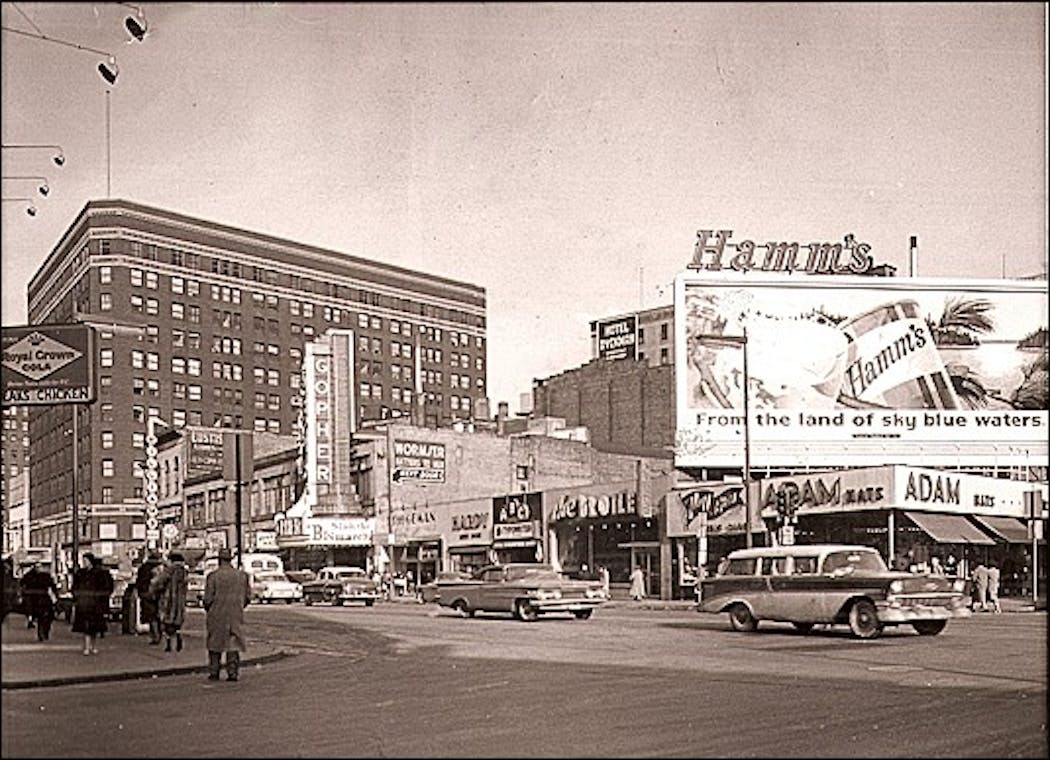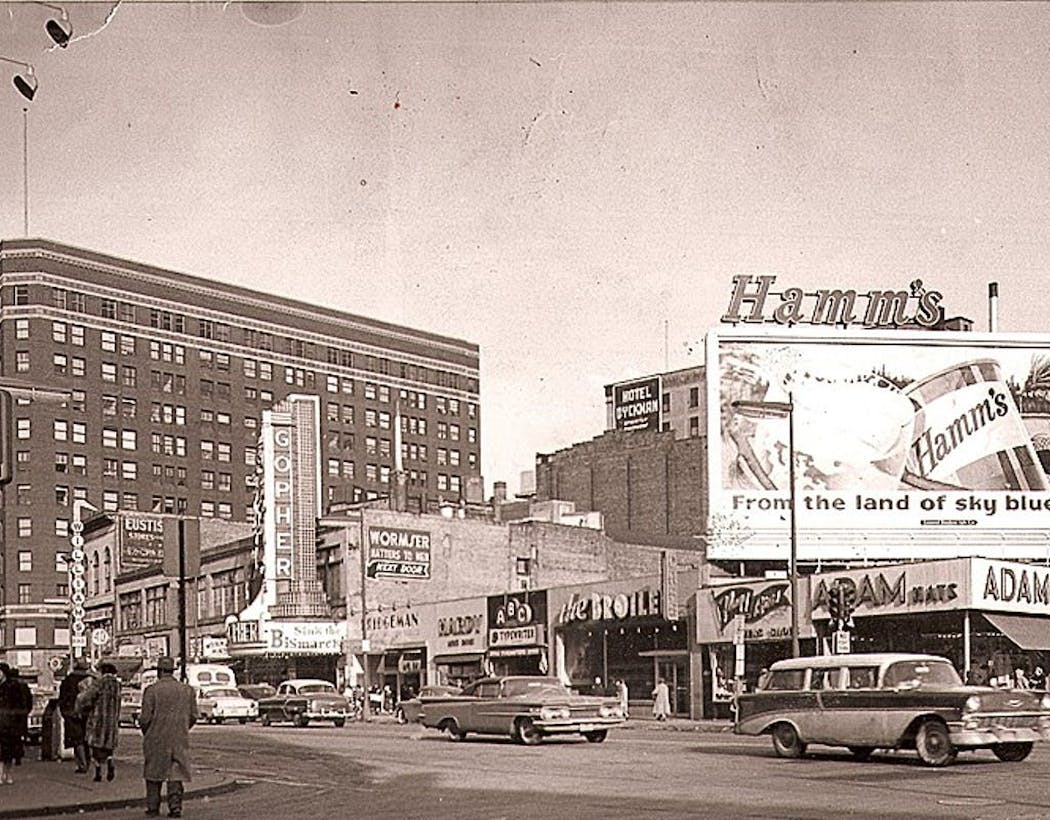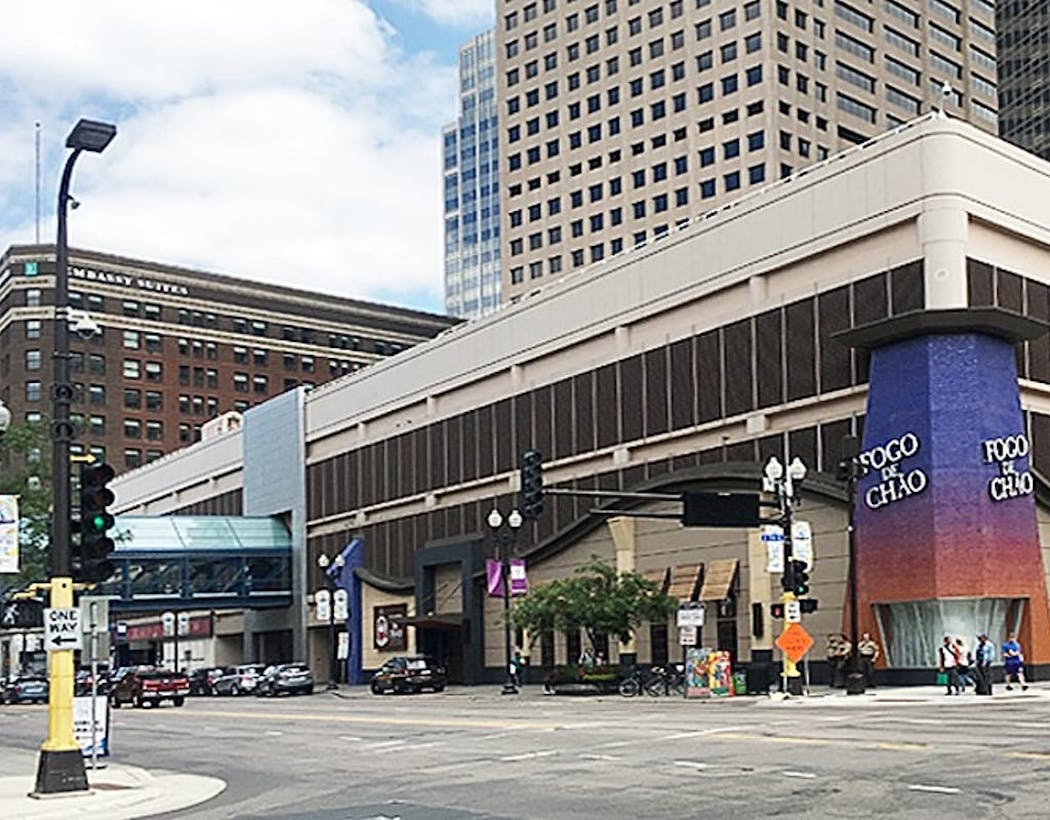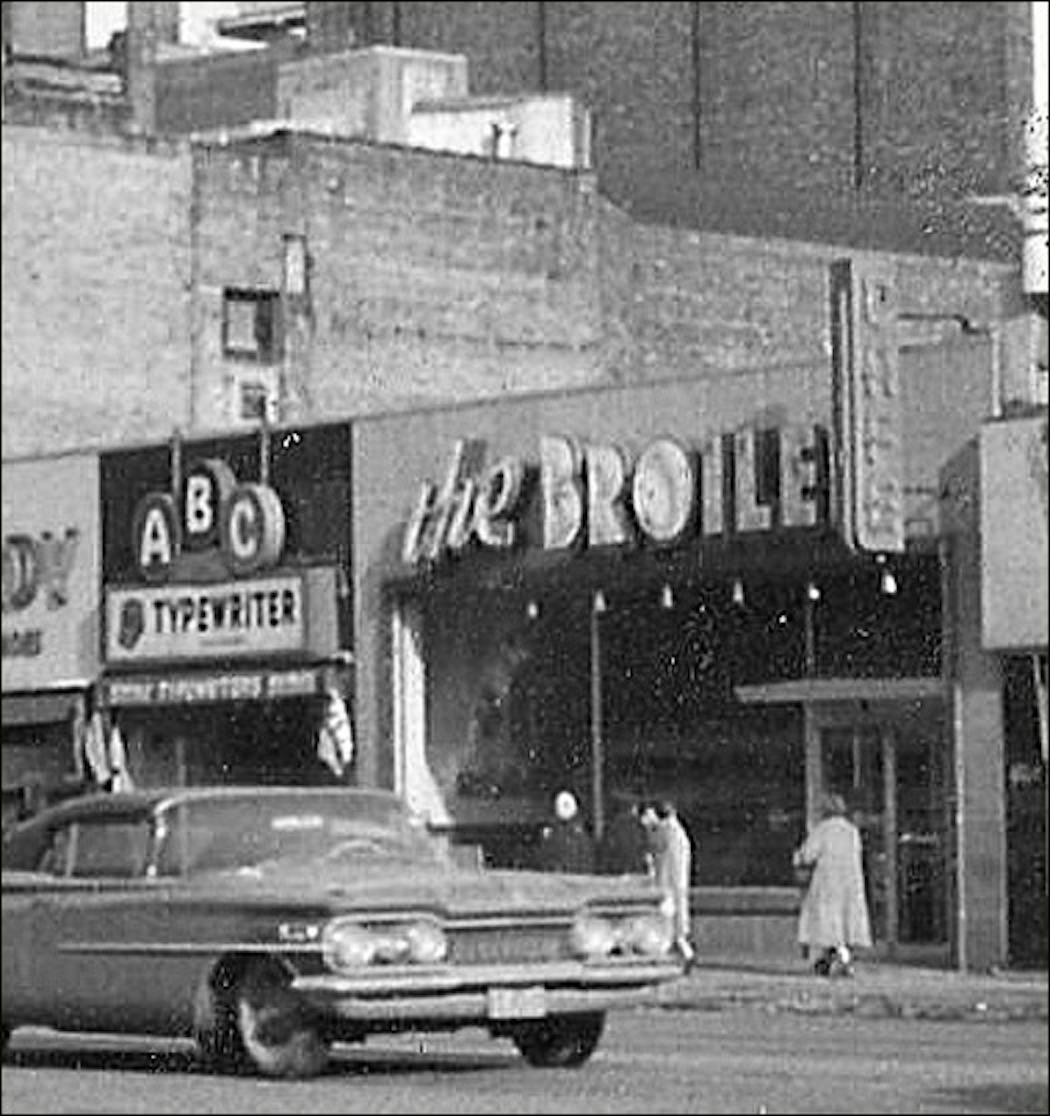In the summer of 1960, the Star Tribune sent photographers to snap a shot of every corner in downtown Minneapolis. This is the latest installment in a series that takes a closer look at those pictures, and passes on a few pieces of Minneapolis history. Let's get started:
Block E was the problem. Block E had dive bars and skin-flick theaters, so it needed to go away. In its stead rose the romantically-named . . . Block E, a retail complex that continued modern American cities' almost unbroken string of failed downtown retail complexes. Now it's mostly Mayo. Block E, that's what everyone talked about for decades.
But what about the block across the street?
Here you go.
Let's start on the right, at 7th street.
About Hamm's, we needn't state the obvious; if you're over 45 or know your Minnesota ad jingles, you may already be thumping the "Song of Hiawatha" beat on your desk.
Retail on Hennepin? Indeed. On the corner, Adam Hats, a nationwide chain for decades, was doomed when men said, "Eh, I'm done with these" in the '60s.
Flagg Brothers Shoes started as a nice dress-shoe chain, but ended the '70s selling chunky funky platform shoes.
Say "Broiler" to people today and they'll point you to the venerable St. Paul diner on St. Clair. I don't think the Hennepin Broiler was connected. The St. Clair Broiler advertised "Charco-Burgers" on their original sign, and there's nothing in this Broiler's advertising that uses the term.
Getty archives has a great shot from 1956, here.
Thanks to the Minnesota Historical Society's archives, we can take a peek inside.
The Broiler turned into a Big Boy eventually, and had a sculpture of the red-and-white checked pudgy meat-mascot as late as 1970. After that, can't say.
The Gopher. From Cinema Treasures: Take a look at this.
When it opened in 1911, the Grand Theatre, or New Grand Theatre as it was briefly called, was a vaudeville house, but by the 1920s, was showing movies only. It was part of the F & R circuit. The Grand Theatre was wired for sound in 1928, but by 1936 had closed.
Two years later, it was completely remodeled, in Art Moderne style, seating around 1,000, and opening as the Gopher Theatre on Oct. 29, 1938. The name was chosen by a contest, and comes from the University of Minnesota's Golden Gophers football team.
Unlike its Neo-Classical predecessor, the Gopher Theatre was then-very modern looking. It featured the colors of the University of Minnesota, maroon and gold on its Vitrolite exterior and tall tower-style marquee. The interior was done in shades of white and pink.
That marquee – a Liebenberg & Kaplan creation, of course – was gorgeous, and amusing: GOPHER? Really? What's playing at the Woodchuck?
A Bridgeman's next door, so you could get ice cream and coffee after the show.
On the extreme left, a Block E sign – no, they didn't sell Beaks and Chicken – for G's Steak House. It was located on the corner Shinders would eventually occupy.
Let's zoom in on the area by the long Williams Bar sign:
40 cents. That was the price of a ticket to the Aster theater (Cinema Treasure again.)
It was opened in 1916, and designed in Neo-Classical style, with an auditorium that had murals on its side walls depicting scenes from the French countryside between sets of arches. A set of chandeliers hung from the ceiling, and it contained one of the largest pipe organs in Minneapolis, prior to the building of the large palaces a few years later.
In its early years, the Aster Theatre was the place to see the latest Charlie Chaplin comedy, being the exclusive Twin Cities theater to premiere Chaplin's films.
It went porno in 1965. More pictures of the pre-remodeled interior here. It was modernized by Liebenberg & Kaplan.
In the background: the Plymouth Building.
It's a hotel now. By 1960 it had lost its ornamentation; the top was once slathered in wedding-cake frosting.
It's all gone, except for the Plymouth building. City Center – the key to revitalizing downtown, you know – required razing all these buildings in the early 1980s.
Even if they'd saved the Gopher marquee, it would have looked odd hanging off the parking ramp that replaced it.
It would also have put the whole thing to shame.
About 1 in 4 US adults over 50 say they expect to never retire, an AARP study finds
Music Review: St. Vincent's art-rock burns bright on seventh album, 'All Born Screaming'
Cristian Măcelaru to become music director of Cincinnati Symphony Orchestra in 2025-26
Italy bans loans of works to the Minneapolis Institute of Art in a dispute over an ancient statue








